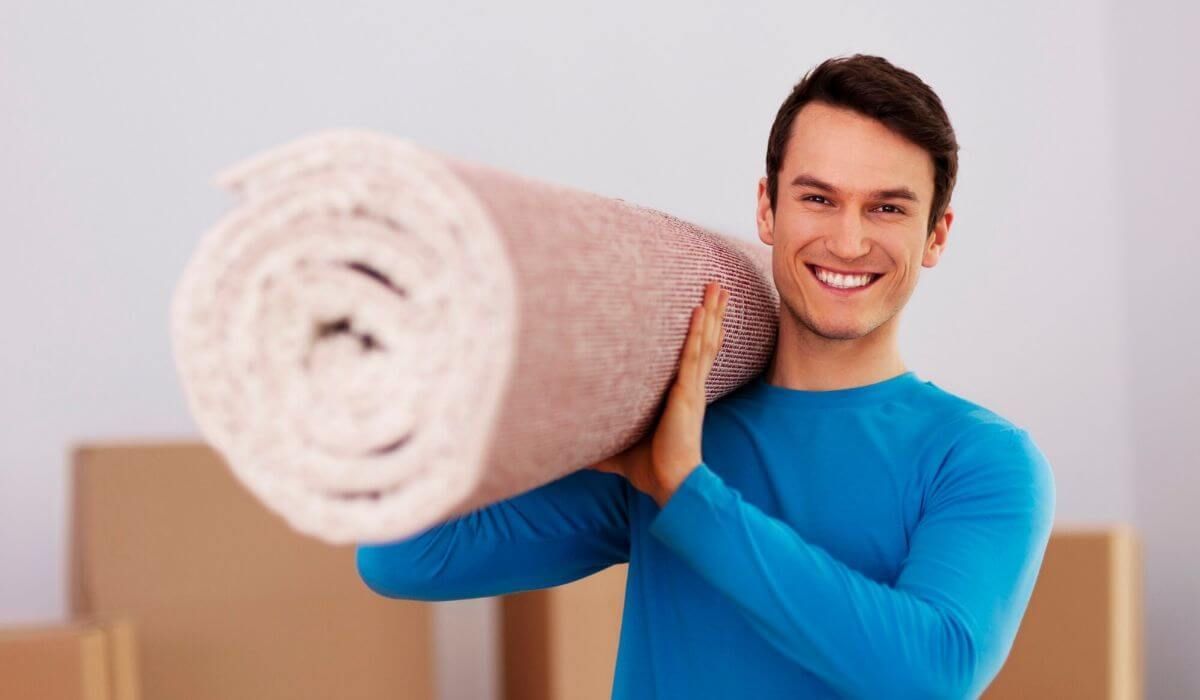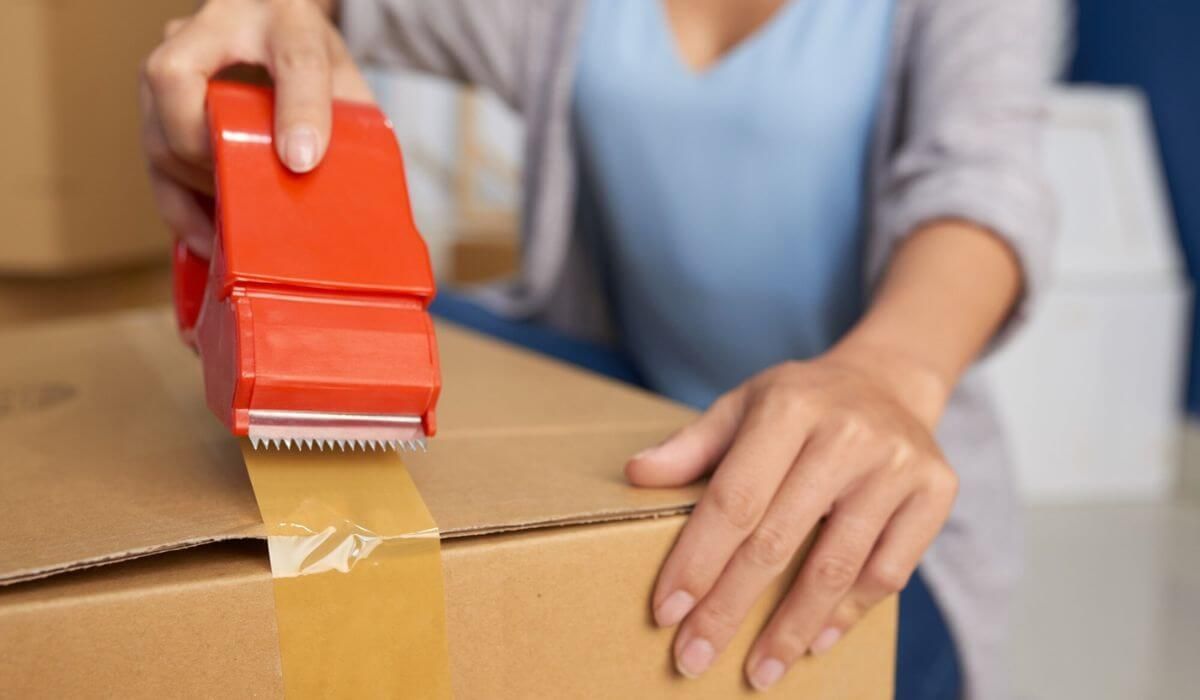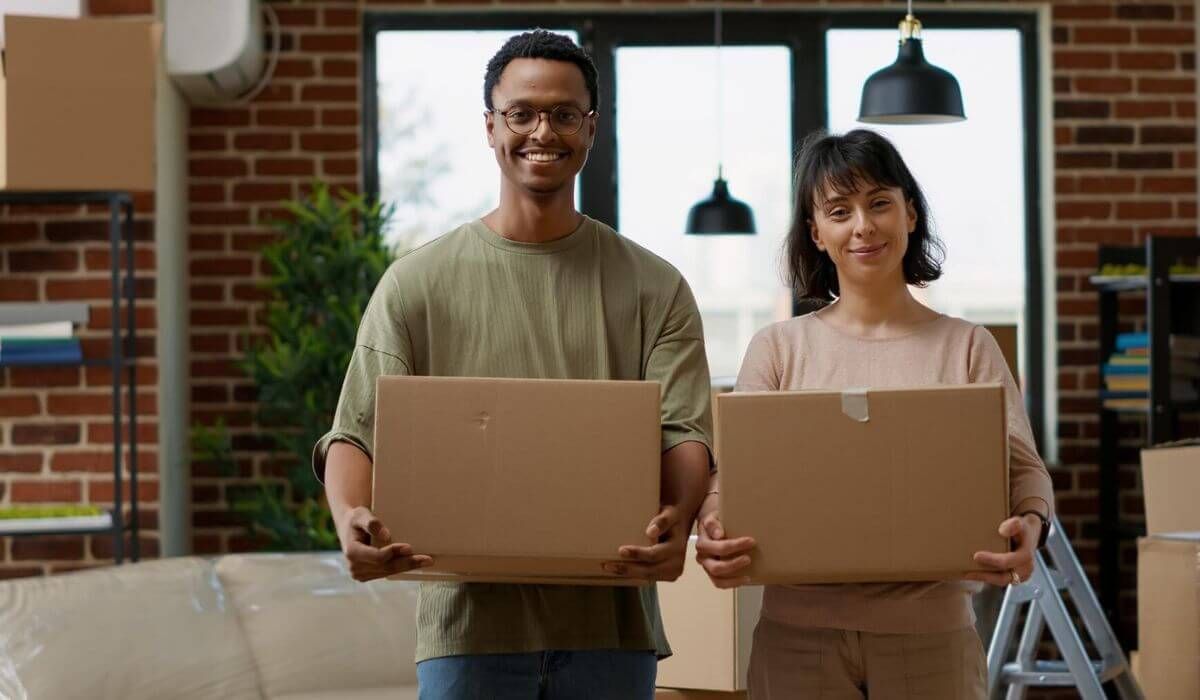Moving means an exciting adventure, but it can also be a tad overwhelming. Between endless boxes and mountains of stuff, the packing process can quickly turn into a stressful scramble.
Here's the good news: with a little planning and some smart decluttering strategies, your move can be a breeze. Think less frantic packing and more organized unpacking in your new place.
Decluttering isn't just about getting rid of things – it's about saving money on moving costs, reducing packing and unpacking time, and creating a fresh, organized space in your new home. So, grab a cuppa, and get ready to grasp some decluttering and packing hacks to make your move a smooth success!
Decluttering Strategies Before Your Move
Benefits of Decluttering
Decluttering before your move isn't just about getting rid of old junk (although that's certainly a perk!). Here are some key benefits that will make you a believer in the decluttering power:
- Save Money on Moving Costs: The less stuff you have to move, the less you'll pay. Movers typically charge based on weight and volume, so a decluttered home translates to a lighter load and potentially a smaller truck. This can save you hundreds of dollars on moving day.
- Reduce Packing and Unpacking Time: Imagine unpacking boxes filled with items you haven't used in years. Not exactly thrilling, right? Decluttering eliminates the need to pack and unpack unnecessary belongings, freeing up precious time and energy during your move.
- Create a More Organized New Space: Moving to a new home is a chance for a fresh start. By decluttering beforehand, you'll arrive with only the items you truly love and use. This makes it easier to organise your new space and create a more peaceful and functional environment.
Decluttering Methods
Now that you're convinced of the power of decluttering, let's look into some practical strategies to get you started.
- Room-by-Room Approach: Don't try to tackle your entire house at once. Instead, focus on one room at a time. This will make the process feel less daunting and allow you to concentrate on specific areas. Start with a room you use less frequently, like a spare bedroom or the garage, and gradually work your way through the house.
- The "KonMari Method" (Spark Joy) or Similar Techniques: There are many decluttering philosophies out there, and the KonMari Method, popularized by Marie Kondo, is a great one to consider. This method encourages you to hold each item and ask yourself if it "sparks joy." If not, thank it for its service and let it go. There are other decluttering techniques that focus on functionality or usefulness – choose the one that resonates most with you.
- Designate "Keep," "Sell," "Donate," and "Discard" Piles: As you go through your belongings, create four distinct piles: keep, sell, donate, and discard. This will help you sort through items efficiently and ensure they find the best possible destination. Keep items you use regularly and bring you joy. Consider selling gently used items online or at a garage sale. Donate items that are still in good condition to charity. Finally, discard anything broken, damaged, or no longer needed.
Decluttering can be an emotional journey, so be patient with yourself. Take breaks when needed, and don't be afraid to ask friends or family for help. By following these tips, you'll be well on your way to a stress-free move and a more organised new home.
Packing Tips for a Long-Distance Move
Choose the Right Packing Materials
Having the proper supplies on hand is the foundation of stress-free packing. Here's your must-have list:
- Sturdy Cardboard Boxes in Different Sizes: Cardboard boxes are the workhorses of any move. Invest in a good variety of sizes to accommodate everything from delicate figurines to bulky winter coats. Pro tip: Opt for new or gently used boxes for maximum stability.
- Packing Tape (Regular and Heavy-Duty): Secure those boxes like a pro! Regular packing tape is sufficient for most items, while heavy-duty tape comes in handy for particularly weighty boxes.
- Bubble Wrap and Packing Peanuts: These cushioning heroes are lifesavers for your fragile belongings. Bubble wrap provides a protective layer, while packing peanuts fill empty spaces and prevent items from shifting during transit.
- Permanent Markers: Clearly labelled boxes are your best friends during unpacking. Use a permanent marker to write a detailed description of the contents on each side of the box.
- Colored Labels (Optional): For an extra layer of organization, consider using colored labels to categorize boxes by room. This makes unpacking in your new home a breeze!
Smart Packing Techniques
Packing for a move can feel daunting, but with a few clever strategies, you can transform it into a smooth and efficient process. Here are some handy techniques to ensure your belongings arrive safely and you settle into your new place with minimal stress.
Pack Room by Room with a Labeling System
Conquer your home one room at a time! This approach prevents a chaotic mix-up of items and makes unpacking a breeze. As you pack each box, clearly label it with the room it belongs to. Include a brief description of the contents for added convenience, like "Living Room - Lamps & Décor" or "Kitchen - Pots & Pans." This labeling system will be a lifesaver when you reach your new home, allowing you to identify and direct boxes to their designated rooms effortlessly.
Distribute Weight Evenly Across Boxes
Imagine the dismay of lifting a box that feels like it contains a small elephant! To avoid backaches and make maneuvering boxes easier, ensure even weight distribution. Pack heavier items like books in smaller boxes and lighter items like blankets in larger ones. This will make carrying and stacking boxes much more manageable.
Use Towels and Linens for Fragile Items
Packing peanuts and bubble wrap are great, but don't underestimate the protective power of your own belongings! Soft towels, linens, and blankets can be excellent cushioning for fragile items. Wrap plates, glassware, and picture frames in these soft materials to create a secure and economical buffer against bumps and jostles during transport.
Empty and Secure Drawers of Dressers and Desks
Dressers and desks can become heavy and cumbersome when filled with belongings. To prevent damage during transit, empty the drawers completely. Secure them with tape to stop them from opening and their contents spilling out. Alternatively, remove the drawers entirely and pack them separately, labeling them clearly with the corresponding piece of furniture.
Utilize Suitcases and Wardrobe Boxes for Clothes
Suitcases and wardrobe boxes are your secret weapons for packing clothes efficiently. Suitcases naturally protect your shirts, pants, and dresses, and you can maximize space by filling any empty compartments with socks, scarves, or rolled-up delicates. Wardrobe boxes, on the other hand, allow you to hang your clothes wrinkle-free, saving you precious ironing time upon arrival at your new home.
Create a "First Night Essentials" Box
Moving day can be exhausting, and the last thing you want to do is frantically search for essentials amidst a sea of cardboard boxes. Pack a designated "First Night Essentials" box containing items you'll need immediately, such as pajamas, toiletries, medications, a change of clothes, a phone charger, and a basic toolkit. This thoughtful move will ensure a smooth transition into your new space, allowing you to relax and unwind after a long day.
Packing Fragile Items for Moving
Let's face it, packing fragile items can feel like a high-stakes game. You want your prized possessions to arrive at your new home safe and sound, ready to create new memories. Fear not, Sydney friends! With a few simple techniques, you can transform yourself into a packing pro for even the most delicate items.
Double Box for Extra Protection
Here's a golden rule for fragile items: when in doubt, double box it! This might seem excessive for smaller trinkets, but for precious keepsakes or anything with a hefty weight, a double layer of cardboard provides invaluable shock absorption. No matter how careful movers are, bumps are inevitable during a move. A double box creates a protective buffer, significantly reducing the risk of cracks or chips.
Wrap Items Individually with Bubble Wrap or Packing Paper
Now, let's get to the actual wrapping. Bubble wrap is your best friend here. Generously wrap each fragile item individually, making sure there's a good layer of bubble cushioning all around. Packing paper is a great alternative for flatter items like plates or picture frames. Don't be shy – use plenty of paper to create a soft cocoon around your treasures.
Fill Empty Spaces with Packing Peanuts
Once your items are wrapped, it's time to address the empty space in the box. This is where packing peanuts come in as heroes. These little foam wonders fill in the gaps between your wrapped items, preventing them from shifting and bumping against each other during transport. A snug fit is key!
Label Boxes Clearly as "Fragile"
Finally, don't forget the power of a clear label. Mark your boxes prominently with "Fragile" on all sides. This will signal to movers that extra care is needed when handling these particular boxes. You can take it a step further by colour-coding your fragile boxes – for instance, all kitchenware in red-labelled boxes and ornaments in blue. This system can help with easy identification during unpacking at your new place.
Creative Uses for Moving Boxes
Let's face it, those sturdy cardboard boxes that helped you move can feel like an eyesore after the unpacking is done. But before you toss them in the recycling bin, consider this – with a little creativity, they can be transformed into several handy items for your new home!
Short-Term Furniture Solutions (Shelves, Ottomans)
Unpacking can take time, and sometimes your new furniture isn't quite ready to move in. Don't fret! Moving boxes can act as temporary shelves. Simply reinforce the bottoms with packing tape for extra sturdiness, and arrange them side-by-side to create makeshift bookshelves or display units. Feeling fancy? Cover them with fabric or wrapping paper for a more polished look.
Moving boxes can also be surprisingly comfortable ottomans! Stack two or three boxes securely on top of each other, add some padding with blankets or pillows, and then drape a throw or sheet over them. Instant seating, perfect for putting on your shoes or catching a quick rest during unpacking.
Storage Solutions in the New Home
Moving boxes are champions of organization! Don't underestimate their potential for keeping your new space tidy. Here are some ideas:
- Labelled Storage: Decorate leftover boxes and label them clearly. Use them to store off-season clothes, holiday decorations, or even crafting supplies.
- Pantry Powerhouse: Cardboard boxes are perfect for organizing bulky pantry items like canned goods or cereal boxes. Group similar items together in labelled boxes for a clutter-free pantry.
- Shoe Sanctuary: Tired of shoes scattered everywhere? Stack and reinforce cardboard boxes to create a designated shoe storage unit.
Bonus Tip: For a more permanent storage solution, consider reinforcing cardboard boxes with duct tape and fabric for a more robust look.
Kids' Play Activities (Tunnels, Forts)
Moving boxes are a goldmine for imaginative play! Turn them into:
- Tunnels: Cut out doorways or connecting passages in several boxes, and tape them together to create a thrilling cardboard tunnel for your little explorers.
- Forts: Let your child's imagination run wild! Cardboard boxes can be transformed into magnificent castles, pirate ships, or even cozy reading nooks with a little creativity and some blankets.
- Puppet Theatres: Cut out a stage opening in a box, decorate it, and use socks or other household items as puppets. Instant entertainment for rainy days!
Safety First: Remember to supervise young children when playing with cardboard boxes and remove any sharp edges.
Composting Bins (Cardboard is Biodegradable!)
Did you know cardboard is biodegradable? Here's a fantastic eco-friendly use for your leftover boxes:
- Composting Champion: Line a sturdy cardboard box with newspaper and create a designated composting bin for your kitchen scraps. Cardboard breaks down quickly, adding to your compost pile.
- Seedling Starters: Cut out the bottoms of small cardboard boxes to create biodegradable planters for starting seeds. Once the seedlings are ready to transplant outdoors, simply plant the entire cardboard pot directly into the ground – it will decompose naturally!
What NOT to Pack When Moving
Moving is a whirlwind, and with so much to pack, it's easy to toss things in boxes without a second thought. But hold on! Not everything in your home needs to make the journey to your new place. Let's explore some items you can safely leave behind, saving you money on moving costs and unpacking time.
Hazardous Materials
This one's a no-brainer. Flammable liquids, paint thinners, cleaning chemicals, and aerosols can all be dangerous during transport. Moving companies typically won't accept them, and risking a leak or explosion is simply not worth it. Check your local council's guidelines for safe disposal of these items.
Perishable Food Items
Resist the urge to pack that half-eaten bag of chips or wilting lettuce. Perishable food items won't survive the trip, and they'll just add unnecessary weight to your boxes. Finish up what you have on hand, donate unopened canned goods to a local food bank, and enjoy the opportunity to stock your new fridge with fresh groceries.
Important Documents
Passports, birth certificates, wills, and other irreplaceable documents should never be packed in a moving box. These essential items are best kept with you during your move, either in a secure bag or carried directly. Easy access to these documents might be crucial when setting up utilities or enrolling children in school at your new location.
Expired or Unnecessary Medications
While medications are important, expired or unused medications pose a safety risk. Take some time to sort through your medicine cabinet and properly dispose of anything outdated or no longer needed. Many pharmacies offer safe medication disposal programs – it's a quick and responsible way to clear out your clutter.
Bulky Items You Can Replace Inexpensively
We all have those bulky items that hold sentimental value but might not be practical in your new space. That old beanbag chair or a rarely used exercise machine might be better off left behind. Consider selling them online, donating them to a good cause, or (if they're truly unusable) disposing of them responsibly. Chances are, you can find similar, more space-efficient replacements at a lower cost once you're settled in.


